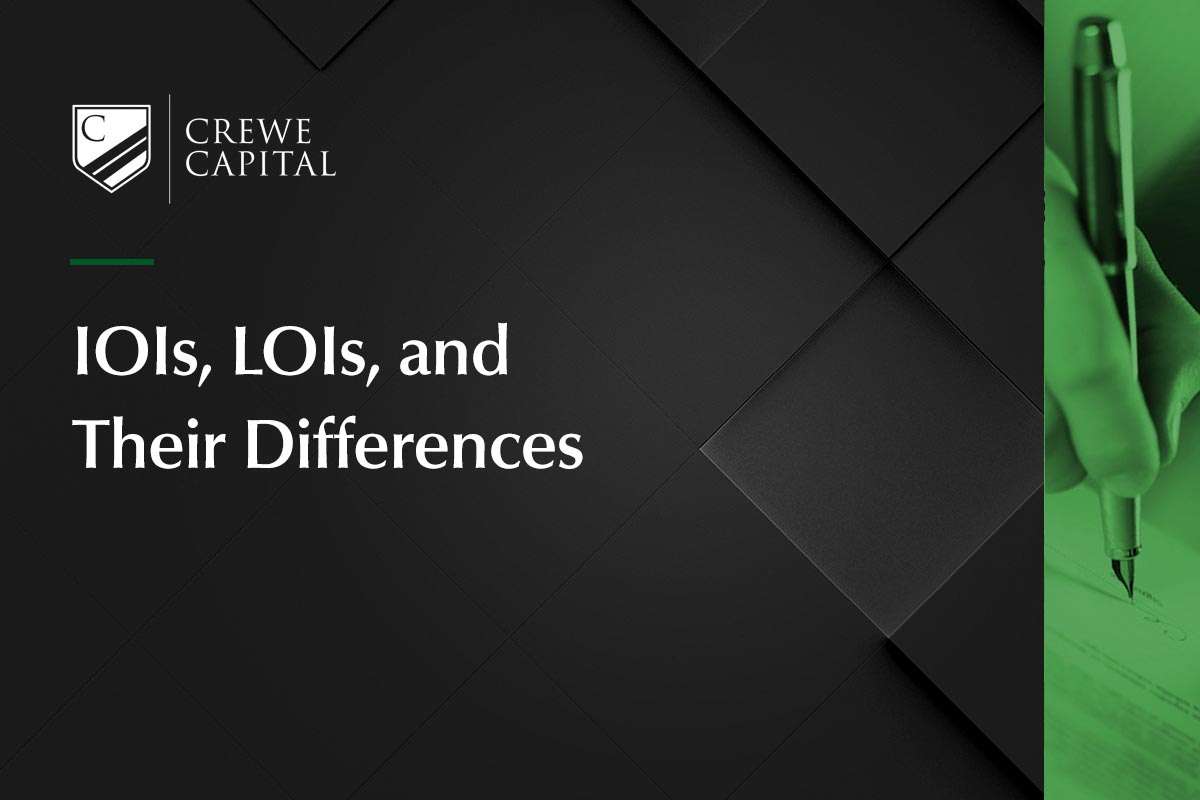M&A deals are often run with a structured two-step bidding process. The intent of this is to keep potential buyers on a strict timeline and create competitive tension, shifting the leverage to the seller. Not only can this help the timeliness of the process, but also signals to buyers that other parties are at the table, which encourages them to behave properly through the process and put their best foot forward when submitting an offer. The first bid in the process is referred to as an Indication of Interest (IOI), while the second bid is a Letter of Intent (LOI). In this article, we will dive into what both are, what can be expected in each, and the key differences between the two.
What is an IOI?
The Indication of Interest, or IOI, is the first bid that prospective buyers will submit for the acquisition of a company. After they have seen the teaser, signed an NDA, and reviewed the Confidential Information Memorandum (CIM) for the deal, buyers that have serious interest will present this bid by a set deadline to be considered for the second round of bidding. IOIs are typically high-level, one-to-two-page documents, and will generally include a brief overview of the firm submitting the bid, why they would be a suitable acquirer, and what they are willing to pay for the company.
Often, there will not be a firm valuation they are considering but a range that they hope to land in for their second bid. As valuations in M&A transactions are typically based on multiples (a multiplier of EBITDA or revenue), some buyers will provide the range of multiples they are willing to pay, subject to further due diligence. The reason it is common to see a range for pricing in the first round of bids is because, up to this point in the process, the potential buyers have been provided limited information and have been given limited time to review that information.
Groups that elect to submit an IOI are then given access to more company information in order to provide a more solidified price and deal terms for the acquisition. A handful of the most attractive buyers are then selected by the seller, in conjunction with the investment bankers, to sit down with the sellers for a two-way interview management meeting. IOIs are non-binding, meaning any proposals outlined in the document are not contractual obligations but, instead, are mostly used to gauge genuine interest in buying and separate the most attractive acquirers from the rest of their peers.
What is an LOI?
The second, and typically final, offer in the M&A process is the Letter of Intent (LOI). This document is more detailed and shows that a group has the intent to acquire the company at a stated price. While price is often the most heavily-weighted factor in the offer, LOIs typically include other conditions that should be taken into consideration by sellers. Conditions commonly outlined in the LOI are:
- Sources of capital (how they will fund the acquisition)
- Percentage of the company they plan to purchase (some buyers allow and encourage sellers to retain a portion of the company)
- Types of consideration (cash, stock, seller’s note, etc.)
- Escrow holdbacks (for representations, warranties, and indemnification)
- Any contingencies to the purchase
- Due diligence items and timeline
- Anticipated closing date
While other terms and conditions may be included, these are the most frequently seen. The terms outlined and negotiated in the LOI establish the architecture for the definitive purchase agreement that will consummate the transaction. Like the IOI, the LOI is non-binding except for a few items. LOIs can include confidentiality clauses, dispute resolutions, and a period of exclusivity during which the seller may not discuss or negotiate with other buyers. Once the most suitable group is selected by the seller and an agreed-upon LOI is signed by both parties, these few terms are generally binding. LOIs are submitted before or on a date set by the sellers and their investment bankers. LOI deadlines are exciting times for sellers as they now have a clear idea of what they may receive for their company.
Differences
IOIs and LOIs are crucial components in running a complete M&A process, but there are some key differences. LOIs are generally much more detailed and provide more defined terms and insight into what the transaction may look like. The terms and conditions in an each LOI may differ from other offers and can be negotiated to what best fits the seller’s desires and objectives. An IOI is not a document to be agreed upon and signed like an LOI, but is rather a preliminary view into which potential buyers could be a good fit for the seller. Once a seller agrees upon and chooses the LOI they like best, both parties will sign it and move forward to the final stages of the transaction process and, hopefully, the closing of the deal.
Understanding the differences between the terms in IOIs and LOIs can be difficult. Hiring an investment bank can help navigate that process. Having M&A professionals at a seller’s side also prevents buyers from trying to take advantage of business owners who may not have experience in capital transactions. Crewe’s professionals have received, reviewed, and negotiated over 1,000 IOIs and LOIs. This experience can help create the most optimal deal terms to fit the needs and desires of each seller.
If you are considering selling your business and would like to learn more about the process, please contact us at ib@crewe.designbotstaging.com.
Have Questions?
If you have any questions regarding the process of selling your business or are interested in discussing how Crewe can assist you, please do not hesitate to contact us. Our goal is to provide maximum value and establish a relationship of trust and transparency with our clients.





